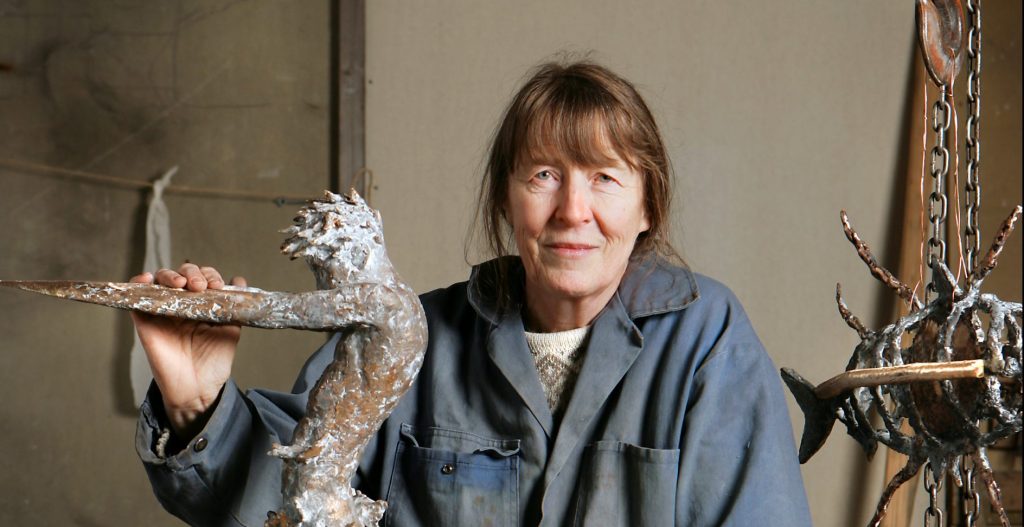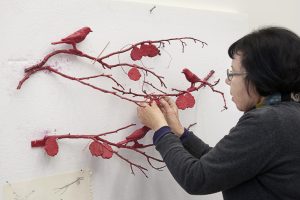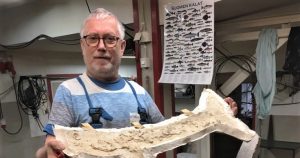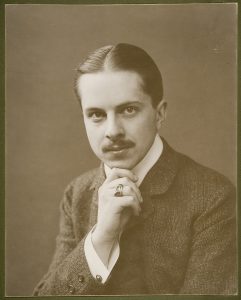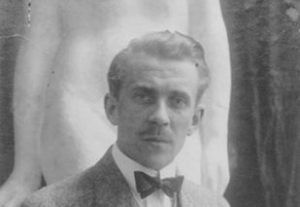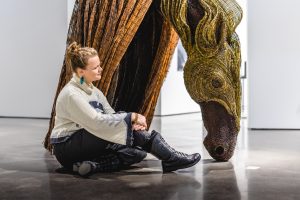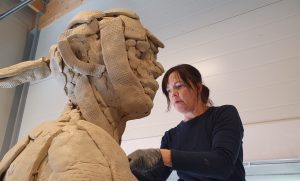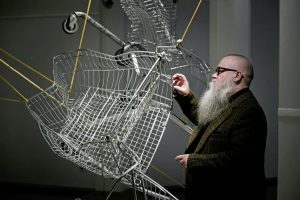Smooth Hoof, Ecstasy
Taru Mäntynen’s sculptures can be roughly divided into two groups. The first, smaller group consists of realistically depicted human figures that she has depicted in both life-size and, especially in public sculptures, also in larger size. The works are composed vividly, yet in such a balanced three-dimensional way that they can and should be observed from different directions. The second, more numerous group consists of different sizes of metamorphoses of man and different animals, sculptures that lead the viewer to Mäntynen’s original mythological world.
The artist has drawn strength for them from nature, and broad influences from rock art and tales from Antiquity and the Kalevala to contemporary literature and modern dance. What these figures have in common, in works such as Silosorkka (Smooth Hoof, 2003) and Hurmio (Ecstasy, 1996) that are part of the exhibition, are the stretched shape of the body and rough, expressive surface finishing. Together with traces of the plaster sketch and green patina they give a strong and lively impression despite the fact that the sculptures are compositionally more static compared to realistically depicted figures. The notable thing is that apart from the largest works, Mäntynen casts her works herself. This allows her to control the entire manufacturing process from the creation of a plaster sketch all the way to adding final touches to the finished bronze surface.
about ARTIST
Taru Mäntynen (b. 1944 in Kärsämäki) studied at the Free Art School in 1966–67, at the Vocational School of Arts and Crafts in 1970–72 and at the Fine Arts Academy of Finland in 1972–76. Her works were on display for the first time in the Portrait exhibition of The Association of Finnsih Sculptors at the Ateneum Art Museum in Helsinki in 1972. Mäntynen has made numerous public sculptures and she has received numerous art awards.
Most of the over forty public sculptures have been erected in the towns and municipalities of Eastern Finland but also elsewhere around the country. A few examples: Siskotyttö (Sister) was unveiled in the Kuopio market square in 1984, Laivanrakentajat (Shipbuilders) in the Hertunranta area in Varkaus in 1989, Tuulenpoika (The Wind Boy) at the Helsinki-Vantaa Airport in 2000 and Kaskisavut (Slash-and-Burn Smoke) in Kirkenær, Norway, in 2015. Taru Mäntynen’s art awards include e.g. the shared first prize in the sculpture competition for the Parliament expansion in 1979 and the first prize in the Monument for the Forest Finn competition in 2012, which led to the erection of the aforementioned Kaskisavut sculpture.
Artist's CV
Studies and prizes
Works
Artist photo: Pekka Mäkinen
